Schedule
Okra Crop Schedule
| Product Name | Fertilizers | |||||||
|---|---|---|---|---|---|---|---|---|
| Poornima Kit | NPK Grow Caps |
Humigrow Nano Powder |
Alp | Sonha-Bihan | Amavasya Kit | IBP Kit | ||
| Humic Acid | Chelated Multi-micronutrient |
PGP/PGR | ||||||
| Land Reparation | week -2 | |||||||
| Soil Treatment | week -1 | 1 Kit | ||||||
| Seed Sowing | week 0 | |||||||
| Germination | week 1 | 1 Kit | ||||||
| Vegetative Growth | week 2 | |||||||
| week 3 | ||||||||
| week 4 | 1 Kit | |||||||
| Flowering/ Fruiting | week 5 | 2 Caps | 120gm | |||||
| week 6 | 250gm | 250gm | ||||||
| week 7 | ||||||||
| week 8 | 1 Kit | |||||||
| week 9 | ||||||||
| week 10 | 2 Caps | 120gm | ||||||
| week 11 | 250gm | 250gm | ||||||
| week 12 | ||||||||
| week 13 | ||||||||
| week 14 | ||||||||
| week 15 | ||||||||
| week 16 | ||||||||
| Harvesting | ||||||||
| Total Quantity | 2 Kit | 4 Caps | 240gm | 500gm | 500gm | 1 Kit | 1 Kit | |
| Broadcast | |
| Top Dressing | |
| Basal Dressing | |
| Soil Application | |
| Spray | |
| * | Optional |
NOTE: For the first year donot immidietaly substitute 100% chemical fertilizer with the SIESTO GREEN products, as the soil is used to chemical fertilizer, it may affect the output. So the best way to substitute is by reducing 50% of chemical input in the first year, 25% the following 2nd year, & then another 10% by the 3rd year. After the 3rd year use synthetic fertilizer / inorganic fertilizer if their is a requirement depending on the soil health.
CROP SCHEDULE FOR TOMATO
Sr. No.
Treatment / Application
Product
Dose / Acre
APPLICATION
Management
1
Vegetative – Dissolve in 20 to 200 ltr. of water as required for 1 acre of land and apply through Drip Irrigation or drench.
POORNIMA KIT
1 KIT
Apply it in week 1st & 8th
It is a balanced form of nutrients that includes NPK, Zinc, Cropforce NP, Humigrow NP, and Mycorrhiza NP
2
Vegetative – Mix all with the required amount of water and apply through drip irrigation, flood irrigation, or drenching as per farmer’s availability.
NPK + Humigrow
2 Caps + 120gm
Apply it in week 5th & 10th
It is a balanced form of Nutrition that includes NPK.
3
Flowering – Mix both in 20 – 200 liters of water as per requirement and spray it in the plants.
ALP + Sonhabihan
250gm + 250gm/ 200 lit. of water
Apply it in week 6 and 11
It is a Micronutrient and PGP that helps in Growth, Fruit set, and the quality of the produce.
4
Soil Treatment – Dissolve in 20lit. to 200lit. of water as per requirement for 1 acre of land and apply through drip irrigation or drench.
IBP KIT
1 kit
Apply it as soil application before sowing
It prevents soil-born diseases and nematodes. Apply as per the soil health and soil-born diseases.
5
Vegetative and Flowering/ Fruiting – Mix all with the required amount of water and apply through foliar spray or drenching as per infestation of insect.
Amavasya kit
1 kit
Apply it in week 4th
It is a balanced form of insecticides. Which include Traps, lifeline, Bt, Acarida and Meta capsules.
PEST ATTACKS, BACTERIAL, OR FUNGAL MANAGEMENT
PEST / BACTERIAL / FUNGAL
IDENTIFICATION IN CROP
SYMPTOMS
SUGGESTED PRODUCT
Shoot and Fruit Borers
 The insect larvae bore into the shoots during vegetative growth resulting in drooping of affected shoots.
Traps + Meta + BT
Loopers
The insect larvae bore into the shoots during vegetative growth resulting in drooping of affected shoots.
Traps + Meta + BT
Loopers
 Large or small holes in leaves, caterpillars are pale green with a white line running down either side of their body, eggs are laid singly, generally on the lower leaf surface close to the leaf margin.
Traps + Meta + BT
Whitefly
Large or small holes in leaves, caterpillars are pale green with a white line running down either side of their body, eggs are laid singly, generally on the lower leaf surface close to the leaf margin.
Traps + Meta + BT
Whitefly
 The insect does not cause considerable damage to the crop but acts as a vector to transmit the yellow vein mosaic virus disease.
Lifeline + Traps
Aphids
The insect does not cause considerable damage to the crop but acts as a vector to transmit the yellow vein mosaic virus disease.
Lifeline + Traps
Aphids
 In severe infestation, they cause curling and deformation of young leaves. They secrete honeydew-like substance and black, sooty mold is developed on affected parts.
Lifeline + Traps + Meta + BT
Root-knot Nematode
In severe infestation, they cause curling and deformation of young leaves. They secrete honeydew-like substance and black, sooty mold is developed on affected parts.
Lifeline + Traps + Meta + BT
Root-knot Nematode
 It enters the roots causing characteristic root knots or galls. The aerial symptoms consist mostly of stunted plant growth and yellowing of leaves.
Meta + BT + Pacliq
Powdery Mildew
It enters the roots causing characteristic root knots or galls. The aerial symptoms consist mostly of stunted plant growth and yellowing of leaves.
Meta + BT + Pacliq
Powdery Mildew
 White powdery growth is detected on young leaves and also on fruits. Fruit quality gets deteriorated and remains small in size.
Life-line + Indofa + BT + Bacillus
Damping-Off
White powdery growth is detected on young leaves and also on fruits. Fruit quality gets deteriorated and remains small in size.
Life-line + Indofa + BT + Bacillus
Damping-Off
 High humidity, cloudy weather, overcrowding, and wet soils mainly favor the development of damping-off, and it kills seedlings before or soon after they emerge.
Indofa + Bacillus
High humidity, cloudy weather, overcrowding, and wet soils mainly favor the development of damping-off, and it kills seedlings before or soon after they emerge.
Indofa + Bacillus
 The insect larvae bore into the shoots during vegetative growth resulting in drooping of affected shoots.
Traps + Meta + BT
Loopers
The insect larvae bore into the shoots during vegetative growth resulting in drooping of affected shoots.
Traps + Meta + BT
Loopers
 Large or small holes in leaves, caterpillars are pale green with a white line running down either side of their body, eggs are laid singly, generally on the lower leaf surface close to the leaf margin.
Traps + Meta + BT
Whitefly
Large or small holes in leaves, caterpillars are pale green with a white line running down either side of their body, eggs are laid singly, generally on the lower leaf surface close to the leaf margin.
Traps + Meta + BT
Whitefly
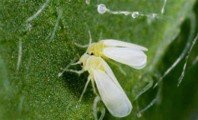 The insect does not cause considerable damage to the crop but acts as a vector to transmit the yellow vein mosaic virus disease.
Lifeline + Traps
Aphids
The insect does not cause considerable damage to the crop but acts as a vector to transmit the yellow vein mosaic virus disease.
Lifeline + Traps
Aphids
 In severe infestation, they cause curling and deformation of young leaves. They secrete honeydew-like substance and black, sooty mold is developed on affected parts.
Lifeline + Traps + Meta + BT
Root-knot Nematode
In severe infestation, they cause curling and deformation of young leaves. They secrete honeydew-like substance and black, sooty mold is developed on affected parts.
Lifeline + Traps + Meta + BT
Root-knot Nematode
 It enters the roots causing characteristic root knots or galls. The aerial symptoms consist mostly of stunted plant growth and yellowing of leaves.
Meta + BT + Pacliq
Powdery Mildew
It enters the roots causing characteristic root knots or galls. The aerial symptoms consist mostly of stunted plant growth and yellowing of leaves.
Meta + BT + Pacliq
Powdery Mildew
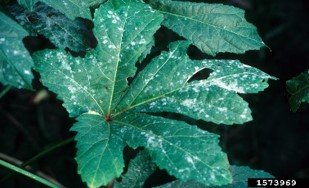 White powdery growth is detected on young leaves and also on fruits. Fruit quality gets deteriorated and remains small in size.
Life-line + Indofa + BT + Bacillus
Damping-Off
White powdery growth is detected on young leaves and also on fruits. Fruit quality gets deteriorated and remains small in size.
Life-line + Indofa + BT + Bacillus
Damping-Off
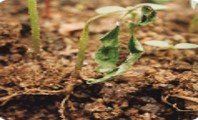 High humidity, cloudy weather, overcrowding, and wet soils mainly favor the development of damping-off, and it kills seedlings before or soon after they emerge.
Indofa + Bacillus
High humidity, cloudy weather, overcrowding, and wet soils mainly favor the development of damping-off, and it kills seedlings before or soon after they emerge.
Indofa + Bacillus
NUTRITION DEFICIENCY
NUTRIENT
IDENTIFICATION
SYMPTOMS
SUGGESTED PRODUCT
Nitrogen
 Leaves become yellowish-green erect. Root Growth Poor. Plants may exhibit stunting and delayed maturity.
Azoto Caps
Phosphorus
Leaves become yellowish-green erect. Root Growth Poor. Plants may exhibit stunting and delayed maturity.
Azoto Caps
Phosphorus
 Slow growth, maturity blazed. Without phosphorus showing the color of yellowish green leaves, the tip of brown leaves is like burning and dwarf leaves.
PSB Plus
Potash
Slow growth, maturity blazed. Without phosphorus showing the color of yellowish green leaves, the tip of brown leaves is like burning and dwarf leaves.
PSB Plus
Potash
 Yellowish leaves wavier, the leaves dry and die
Potash Grow
Iron
Yellowish leaves wavier, the leaves dry and die
Potash Grow
Iron
 Yellowing of leaves starts from margins, and Leaf veins stay green, Later, leaves become whitish-yellow with brown spots, and Stunted Growth.
ALP
Manganese
Yellowing of leaves starts from margins, and Leaf veins stay green, Later, leaves become whitish-yellow with brown spots, and Stunted Growth.
ALP
Manganese
 An Mn deficiency is recognized by interveinal chlorosis (yellowing between the veins of the leaves) while the veins themselves remain dark green.
ALP
Zinc
An Mn deficiency is recognized by interveinal chlorosis (yellowing between the veins of the leaves) while the veins themselves remain dark green.
ALP
Zinc
 Yellowing of older leaves. Old leaf tip burns. Young leaves wrinkle and curl. Necrosis spots appear in really bad cases.
Zinc Grow Caps
Sulphur
Yellowing of older leaves. Old leaf tip burns. Young leaves wrinkle and curl. Necrosis spots appear in really bad cases.
Zinc Grow Caps
Sulphur
 The leaves show general overall chlorosis. The yellowing is much more uniform over the entire plant including young leaves.
Sulphur Caps
The leaves show general overall chlorosis. The yellowing is much more uniform over the entire plant including young leaves.
Sulphur Caps
 Leaves become yellowish-green erect. Root Growth Poor. Plants may exhibit stunting and delayed maturity.
Azoto Caps
Phosphorus
Leaves become yellowish-green erect. Root Growth Poor. Plants may exhibit stunting and delayed maturity.
Azoto Caps
Phosphorus
 Slow growth, maturity blazed. Without phosphorus showing the color of yellowish green leaves, the tip of brown leaves is like burning and dwarf leaves.
PSB Plus
Potash
Slow growth, maturity blazed. Without phosphorus showing the color of yellowish green leaves, the tip of brown leaves is like burning and dwarf leaves.
PSB Plus
Potash
 Yellowish leaves wavier, the leaves dry and die
Potash Grow
Iron
Yellowish leaves wavier, the leaves dry and die
Potash Grow
Iron
 Yellowing of leaves starts from margins, and Leaf veins stay green, Later, leaves become whitish-yellow with brown spots, and Stunted Growth.
ALP
Manganese
Yellowing of leaves starts from margins, and Leaf veins stay green, Later, leaves become whitish-yellow with brown spots, and Stunted Growth.
ALP
Manganese
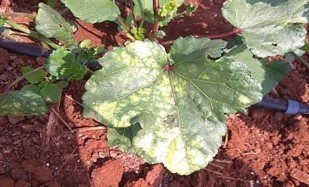 An Mn deficiency is recognized by interveinal chlorosis (yellowing between the veins of the leaves) while the veins themselves remain dark green.
ALP
Zinc
An Mn deficiency is recognized by interveinal chlorosis (yellowing between the veins of the leaves) while the veins themselves remain dark green.
ALP
Zinc
 Yellowing of older leaves. Old leaf tip burns. Young leaves wrinkle and curl. Necrosis spots appear in really bad cases.
Zinc Grow Caps
Sulphur
Yellowing of older leaves. Old leaf tip burns. Young leaves wrinkle and curl. Necrosis spots appear in really bad cases.
Zinc Grow Caps
Sulphur
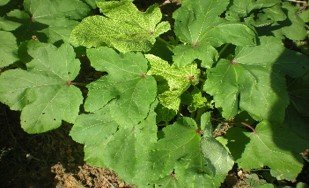 The leaves show general overall chlorosis. The yellowing is much more uniform over the entire plant including young leaves.
Sulphur Caps
The leaves show general overall chlorosis. The yellowing is much more uniform over the entire plant including young leaves.
Sulphur Caps


